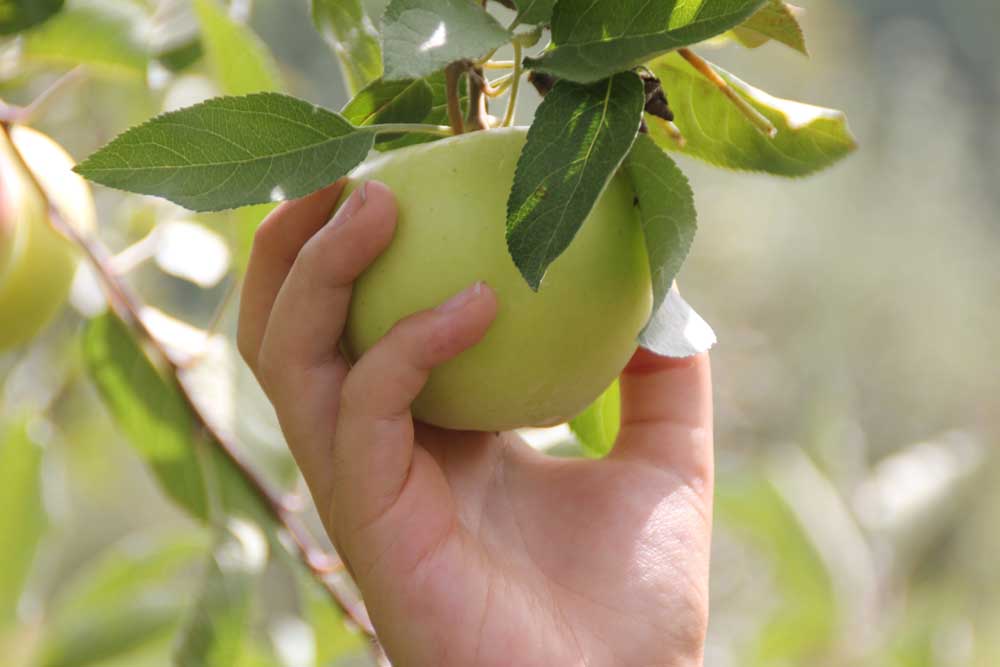A Spring Gardening Checklist
Published 12:00 am Saturday, March 30, 2019

- Gear Up to Garden!
• In late March to early April, turn up raised garden beds and seed with a cover crop (such as a blend of clover and pea seeds). Once it’s grown and before it goes to seed, turn it into the soil and let it decompose. This acts as a compost and adds organic matter back into the soil.
• Consider edible landscaping plants such as fruit trees and berry-producing shrubs.
• Order seed packets and reserve fruit trees now. Apples, Asian pears, and plums are most successful here.
• Prune deciduous trees and shrubs beginning in late March and continue pruning throughout the summer. Be careful not to prune flowering trees and shrubs that bloom on last year’s growth (old wood)—lilacs, for example. Wait until these plants are finished blooming and then prune shortly after the flowers die off. (Conifers should be pruned in late fall to avoid Sequoia pitch moth damage.)
• Research and plan to add perennials, trees, or shrubs to your landscaping in late spring.
• Purchase or order annual and vegetable garden seeds with 65–80 days to maturity. Remember to add 14 days to the maturity date on the packets (this is approximately how long it will take for plants to mature here in Central Oregon because this region has little to no plant growth at night).
• Plant seed flats for cool crops, including broccoli, cauliflower, cabbage, and brussels sprouts.
• Gather branches of quince, forsythia, and other flowering ornamentals and bring them inside to force early bloom.
• Plant a windowsill container garden of herbs.
• Use a soil thermometer so you know when to plant vegetable and flower seeds. Cool season vegetables that germinate and grow at a soil temperature of 40 degrees or above consistently include beets, carrots, peas, radishes, lettuce, and spinach, to name a few.
• Repair, clean, sharpen, and maintain garden tools and equipment. Have lawn mower blades sharpened before you begin mowing the lawn this season.
• Stock up on row cover and water walls, which help to extend the growing season and protect plants from frost damage. They work well for tomatoes, peppers, and other sun-loving crops.
• Direct-seed beets, lettuce, peas, radish, and spinach.
• Transplant broccoli, cabbage, and onions that were started from seed (have frost protection in place using row cover).
• April is a good time to fertilize bulbs. Use a fertilizer high in phosphorus—for example, 0-46-0 (the numbers on the fertilizer bag are nitrogen-phosphorus-potassium).
• Mid April through May is the best time in spring to dethatch and aerate the lawn (dethatchers are available to rent at various rental businesses in Central Oregon). After pulling up and removing the thatch, apply fertilizer to stimulate rapid recovery.
• If you haven’t started vegetable seeds, get them going inside in May to transplant outside in June. Be sure and use a seed start mix soil with any vegetable or flower seeds; regular potting soil may be too heavy for some seeds.
• Cut back any perennials that were left through the winter, removing all dead foliage.
• Prepare garden soil for planting by adding organic matter, including rotted manures and compost, or by planting a cover crop (green manure), such as ryegrass, buckwheat, or barley. If using cow or horse manure, make sure it is free of herbicide residue.
• Direct-seed carrots, chard, kohlrabi, and potatoes in May.
• Plant asparagus crowns or transplants in mid to late May.
• Transplant brussels sprouts, cauliflower, leeks, and peppers.
• Fertilize shade and ornamental trees, shrubs, and perennials with fertilizer mixtures such as 10-6-4 or 20-10-5 in May. A slow-release fertilizer works well for these.








